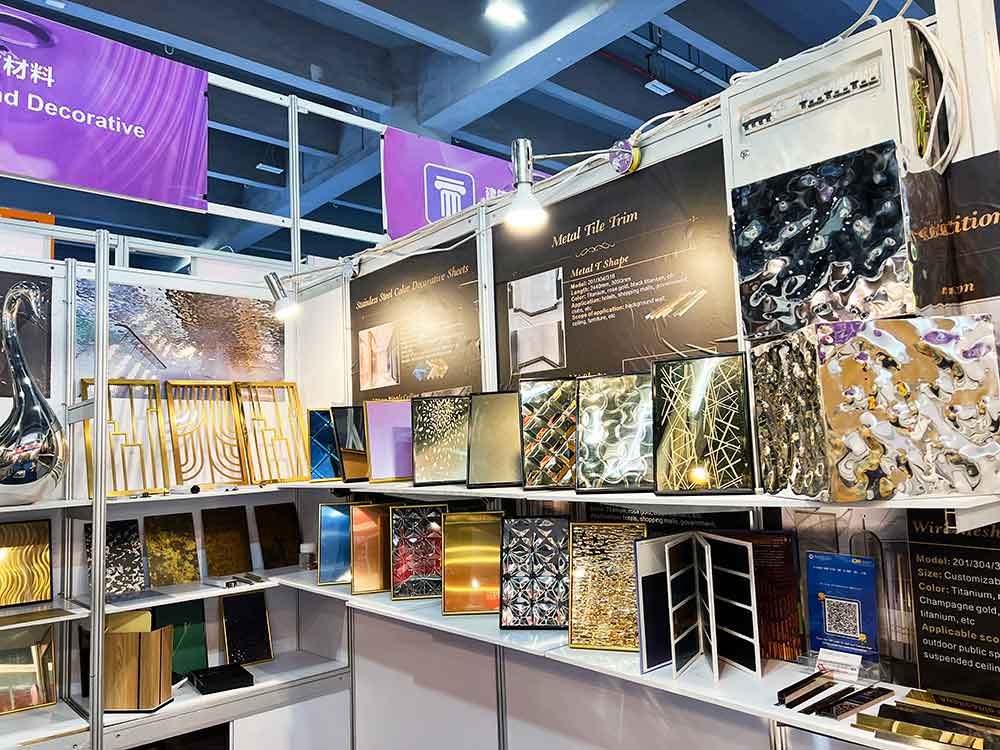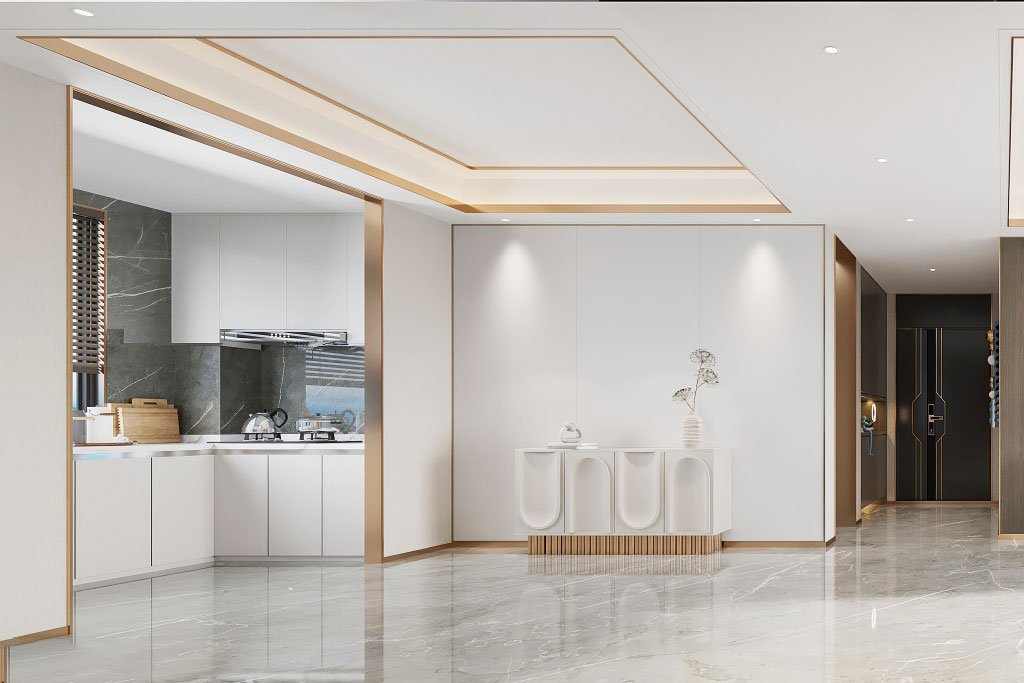Elevator Aesthetics and Safety
Table of Contents
With the rapid development of the urban housing industry, elevators have become an indispensable means of transportation for high-rise buildings. In high-end residential buildings, modern decoration techniques are employed to create visually appealing and comfortable elevator cabin environments. This guide by JYF METAL discusses key points and safety issues related to elevator cabin decoration.
Knowledge on Elevator Car Decoration
What to Decorate
Decoration typically includes the elevator floor, ceiling, walls, armrests, floor indicator, vent, and other related components.
Standards for Decoration
As elevators are special equipment, cabin decoration must meet aesthetic requirements and quality standards related to decoration engineering. Additionally, it should comply with current national standards and industry regulations for elevator equipment installation, testing, and inspection.
Elevator Cabin Decoration Materials
Materials for elevator cabin decoration are primarily divided into stone, metal, wood, glass, and artificial materials.
Stone Material
Mainly used for floor and wall decoration, stone materials are high-grade, varied, and effective.
Metal Materials
Stainless steel plates are primarily used for wall, door, and door frame decoration. Options include hairline finish, mirror finish, mirror-etched, titanium, and gold sheets. Stainless steel is used in elevator cabs, and JYF METAL pays more attention to the quality of the stainless steel surface treatment. Because for the elevator car is a small space, passengers will notice the defects at a glance, for this reason we will carefully follow up each processing step when producing stainless steel elevator panel, to make our products as close to perfect as possible.
Wood
Used for walls, ceiling frames, and floor decoration. Common types include red beech, white beech, bird’s eye maple, black walnut, and mahogany. Wood materials must undergo fire prevention treatment to meet fire safety standards.
Glass
Includes standard glass and mirrors, used for wall decoration. Stainless steel mirrors can also be used.
Artificial Materials
Mainly used for ceilings, transmission plates, transmission columns, and armrests. Ceiling materials are available in various grades to match different cabin decorations. Armrests can also be made from metal and wood.
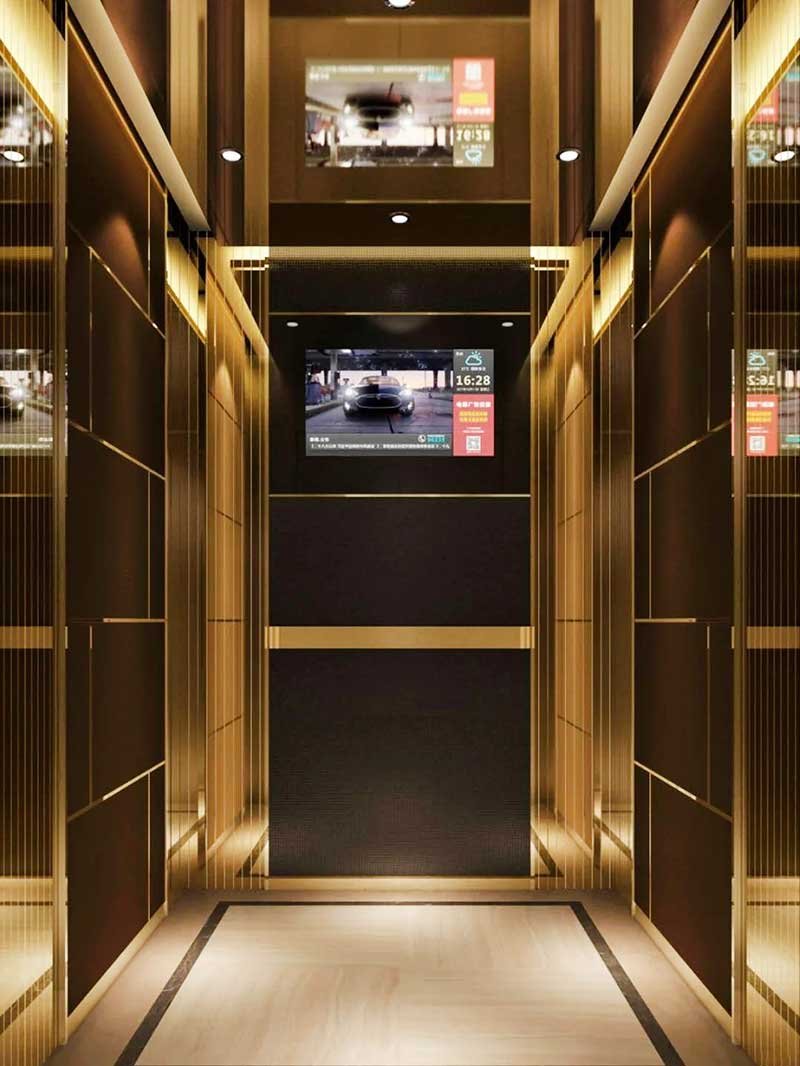
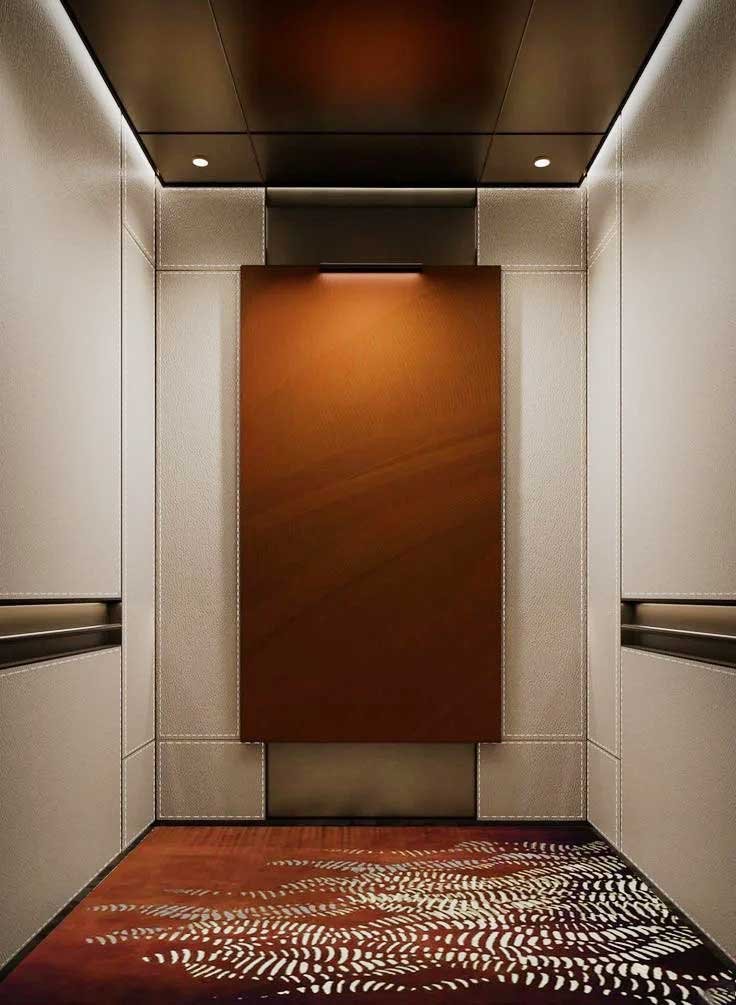
One critical consideration is that elevator decoration can alter the elevator’s balance coefficient. It is essential to estimate the weight of decorations in advance and inform the elevator manufacturing unit. This ensures that the elevator components are adequately configured for safe and effective operation.
Elevator Car Decoration Design
Due to functional and structural limitations, the cabin space is small and enclosed, which can create a sense of oppression and suffocation. Effective design must address this issue.
Shape
The use of graphic elements in decoration does not occupy space and enhances visual effects. Optical illusions and contrasting points, lines, and areas can create a “psychological space.” Modern decorative materials and processing technologies can enrich the spatial experience.
Color
Space color should meet both functional and psychological needs, aiming to create comfort. For residential buildings, the goal is comfort and warmth, using colors with weak contrast. Elevator space colors should embody stability, rhythm, and harmony.
Texture
By comparing different texture materials, designers can create textures that meet aesthetic requirements and tastes. New materials or patterns can enrich spatial levels and beautify the environment, but they must align with the elevator’s function and overall environment.
Lighting
Given that elevator spaces are public, with uncertain and transient users, lighting should be practical, with an auxiliary focus on creating ambiance. Indirect lighting, with soft and uniform light, is preferred.
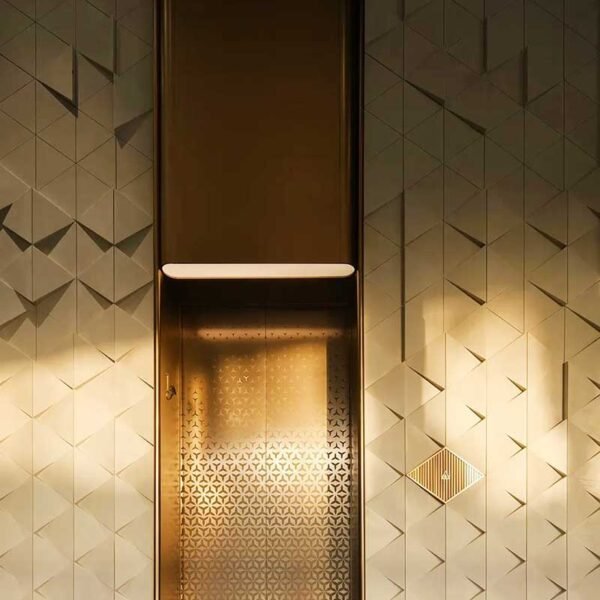
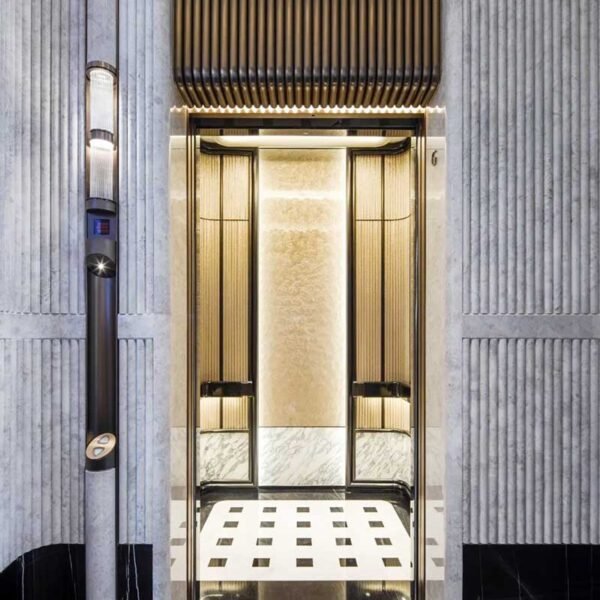
Safety Issues in Elevator Compartment Decoration
Overweight Elevator Cabin
When an elevator cabin is decorated, the added weight can disrupt the balance coefficient, leading to varying degrees of elevator accidents. For instance, if the decorated elevator cabin weighs around 320kg for a 1-ton elevator, and after decoration, it exceeds 380kg, adjustments must be made. To return the elevator to its base point (original balance coefficient), an additional 190kg must be added, making the total weight added to the traction machine 570kg. Although elevator designs typically accommodate some excess weight, exceeding this limit can cause metal fatigue in various components, increasing the risk of accidents. Therefore, it’s crucial to control the weight of the decoration and avoid using overly heavy materials.
Life-Saving Window (Escape Port)
In the event of an elevator malfunction where the cabin cannot return to a floor and the doors cannot open, the elevator may be stuck between floors. Rescuers may need to use the life-saving window on the roof of the elevator cabin. If the life-saving window is obstructed during decoration, rescue operations could be delayed, posing a significant risk to passengers. Thus, the rescue window should always be accessible and unobstructed during the design and decoration process. Safety should never be compromised for aesthetics.
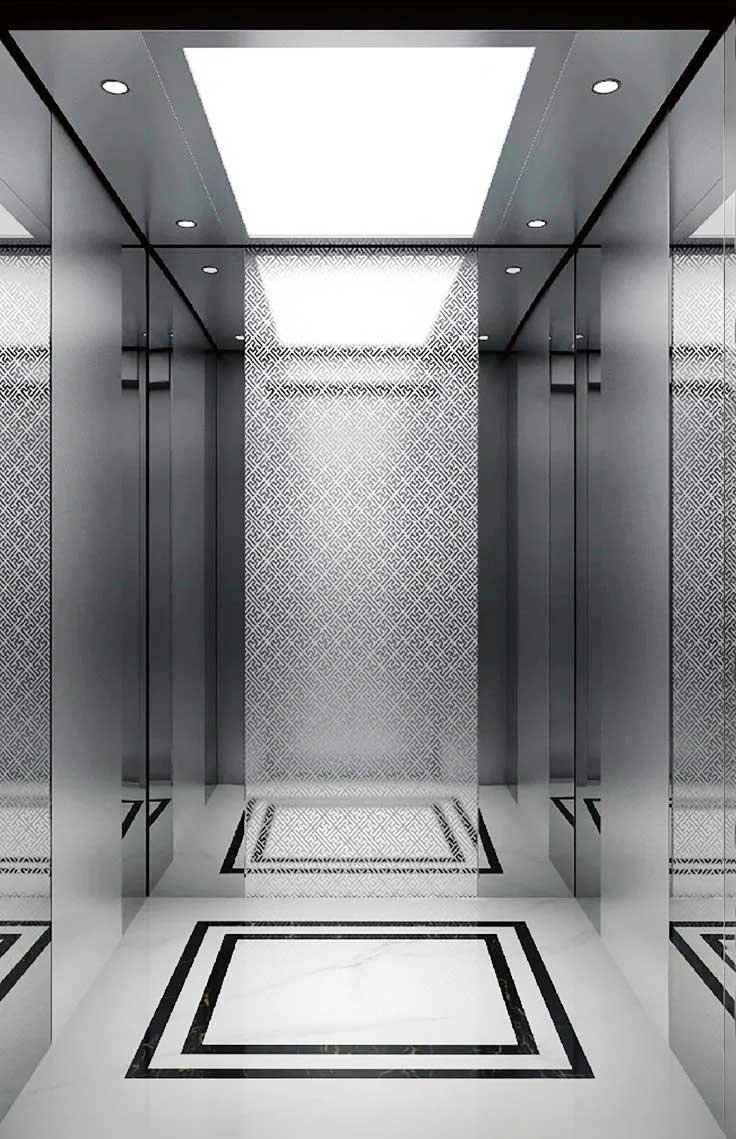
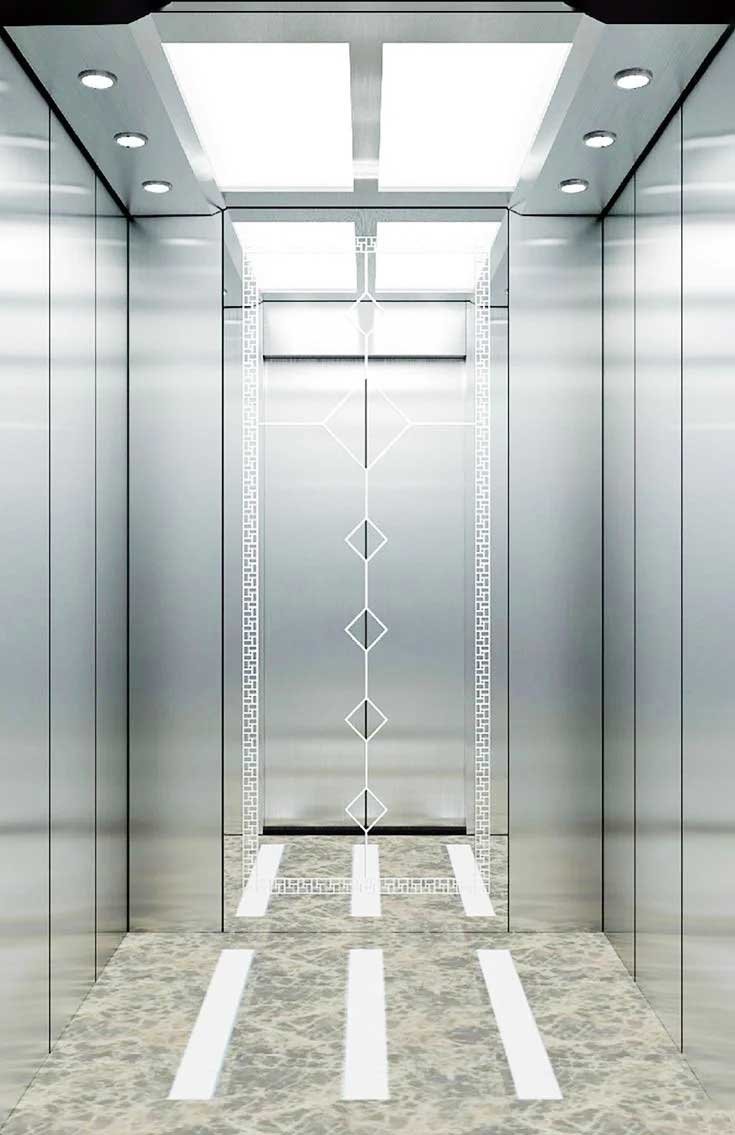
Elevator safety is the foundation for any decoration effort. Only by ensuring safety can we proceed with creating more appealing and well-designed elevator cabins. Regular inspections have revealed that some units perform interior decorations like laying marble or installing solid wood carvings without subsequent adjustments or treatments, which is a critical oversight.
Firstly, altering the cabin’s weight without adjusting the balance coefficient changes an essential technical parameter. The balance coefficient represents the symmetrical balance between the elevator counterweight and the cabin (with load) relative to the traction machine. For example, if a passenger elevator’s rated load is 1,000 kg, and the overload protection device remains set to 1,000 kg post-decoration, the actual load could reach up to 1,200 kg due to the additional 200 kg of decorative weight. This could cause the balance coefficient to exceed 0.5 or the permissible range set by the manufacturing unit. The balance coefficient (K) is critical as it comprehensively considers traction conditions and safety component selection and must not be altered arbitrarily.
Secondly, some maintenance or renovation units might attempt to maintain the balance coefficient by adding weight to the decorated elevator cabin. This method is incorrect. Over-decoration can cause serious elevator overload, leading to permanent structural elongation of the traction wire rope, wear of the traction wheel rope groove, brake shoes, and other parts, and even severe incidents like bottom-dragging. If the elevator does not meet safety requirements and fails inspection, it could become a significant accident hazard.
According to the appendix E of GB7588-2003 “Safety Code for Elevator Manufacture and Installation,” changing the cabin’s rated load and weight is considered an improvement. Therefore, if the elevator requires decoration renovation post-inspection, it should be modified by qualified elevator manufacturing or transformation units. During technical transformation, the design values for the balance coefficient, cabin design parameters, and other specifications must be adhered to. Only after the transformation has been inspected and approved by special equipment supervision and inspection departments can the elevator be put back into use.
For more information and expert services in elevator cabin decoration, visit [www.jyf-metal.com]
JYF METAL is committed to ensuring the safety, functionality, and aesthetic appeal of your elevator cars, providing top-quality materials and expert guidance for all your elevator decoration needs.
You Might Also Like
Please Share This
Recent Posts
- Transforming Spaces with Architectural Cladding: Modern Solutions for Distinctive Building Exteriors
- Stainless Steel Honeycomb Cladding: Modern Solution for Durable and Elegant Facades
- Recessed Stainless Steel Niche: The Perfect Combination of Storage and Style in Bathrooms
- Stainless Steel Ceiling Edge Trim: A Professional Solution for Modern Architectural Decoration
- Stainless Steel Decoration: The Ideal Choice for Luxurious Spa Spaces

